What's New
Displaying results 101 - 110 of 4919

Resource | Fact Sheets,
HIV country profiles are based on data reported by countries which are published as part of UNAIDS' Data Book. HIV country profiles provide an overview of the latest available data on the HIV epidemic and response in the countries from 2023.

Resource | Fact Sheets,
HIV country profiles are based on data reported by countries which are published as part of UNAIDS' Data Book. HIV country profiles provide an overview of the latest available data on the HIV epidemic and response in the countries from 2023.
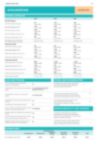
Resource | Fact Sheets,
HIV country profiles are based on data reported by countries which are published as part of UNAIDS' Data Book. HIV country profiles provide an overview of the latest available data on the HIV epidemic and response in the countries from 2023.
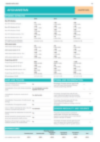
Resource | Fact Sheets,
HIV country profiles are based on data reported by countries which are published as part of UNAIDS' Data Book. HIV country profiles provide an overview of the latest available data on the HIV epidemic and response in the countries from 2023.

Resource | Fact Sheets,
HIV country profiles are based on data reported by countries which are published as part of UNAIDS' Data Book. HIV country profiles provide an overview of the latest available data on the HIV epidemic and response in the countries from 2023.
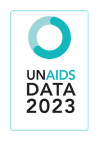
Resource | Publications,
Marked inequalities and diverse epidemic trends affect progress in the HIV response in Asia and the Pacific. The HIV epidemic in the region disproportionately affects people from key populations, especially young people (15–24 years), and their sexual partners. Young people accounted for around a quarter of new HIV infections in the region in 2022. In Cambodia, Indonesia, the Lao People’s Democratic Republic, Myanmar, the Philippines and Thailand, nearly half of new HIV infections occurred among young people.
Median HIV prevalence among people from key populations remains much higher than among the general population. Since 2010, estimated numbers of new HIV infections among gay men and other men who have sex with men increased by six times in the Philippines, tripled in Cambodia and almost doubled in the Lao People’s Democratic Republic. The increasing use of stimulants and synthetic opioids exacerbates the risks of HIV transmission among people who use drugs.
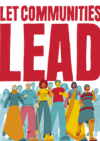
Resource | Publications,
LET COMMUNITIES LEAD - WORLD AIDS DAY 2023
The world can end AIDS, with communities leading the way. Organisations of communities living with, at risk of, or affected by HIV are the frontline of progress in the HIV response. Communities connect people with person-centred public health services, build trust, innovate, monitor implementation of policies and services, and hold providers accountable.
But communities are being held back in their leadership. Funding shortages, policy and regulatory hurdles, capacity constraints, and crackdowns on civil society and on the human rights of marginalised communities, are obstructing the progress of HIV prevention and treatment services. If these obstacles are removed, community-led organisations can add even greater impetus to the global HIV response, advancing progress towards the end of AIDS.
2023 World AIDS Day — Let Communities Lead | UNAIDS

Resource | Publications,
Tuberculosis (TB) remains among the world’s top infectious killers. Each day, around 4000 people lose their lives to TB and around 30,000 people fall ill with this disease. This preventable and curable disease is deeply rooted in communities “left behind” - where poverty is pervasive and human rights and dignity are limited. The devastating social and economic impact on people affected and their families is profound.
This Status Update provides an overview of progress towards global TB targets set in the political declaration of the first UN High-Level Meeting on TB, spanning the period 2018- 2022. It is based primarily on data compiled by WHO’s Global TB Programme from all Member States in annual rounds of data collection.
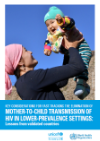
Resource | Publications,
Over more than a decade, the world has made considerable progress in reaching women with services to reduce vertical transmission of HIV. Most countries have adopted lifelong ART to “treat all” pregnant women, regardless of their CD4 count, as part of a public health approach and one of the key objectives to achieve the elimination of mother-to-child transmission (EMTCT) of HIV. Yet, results of efforts to reduce the number of new paediatric HIV infections have fallen short against the 2020 Start Free target, among others; the goal of ending HIV and AIDS in children remains elusive.
This key considerations document expands on the 2020 “last mile” operational guidance, with specific considerations for countries with lower HIV prevalence. It builds on the experiences of countries that have been validated for EMTCT of HIV and syphilis and translates the valuable lessons and promising practices of these countries into an operational framework for national programmes, consisting of 12 strategies and enablers to guide efforts towards Fast-Tracking EMTCT in lower prevalence countries.

Resource | Guidelines,
Infection prevention and control activities are amongst the key components envisaged by the End TB Strategy to curb the tuberculosis (TB) burden worldwide. The WHO operational handbook on tuberculosis. Module 1: prevention - infection prevention and control provides practical advice on how to implement the WHO recommendations on TB infection prevention and control, within the clinical and programmatic management of TB, using a public health approach. It is part of a modular series of practical guides meant for the implementers of various aspects of the programmatic management TB.
The handbook emphasizes the importance of building integrated, well-coordinated, multisectoral actions across all levels of health care and other settings where there is a high risk of M. tuberculosis transmission.





